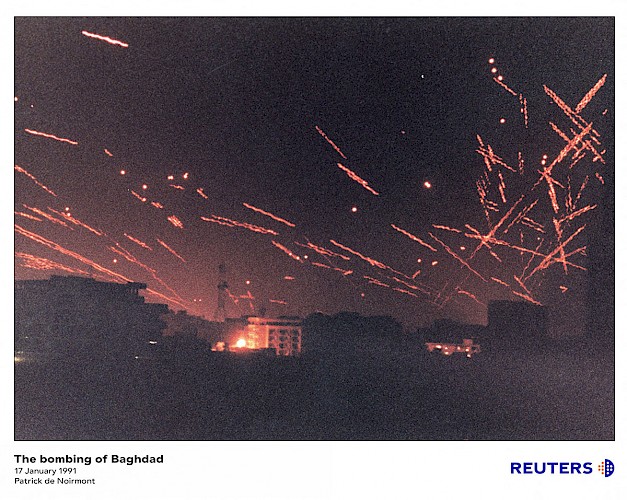
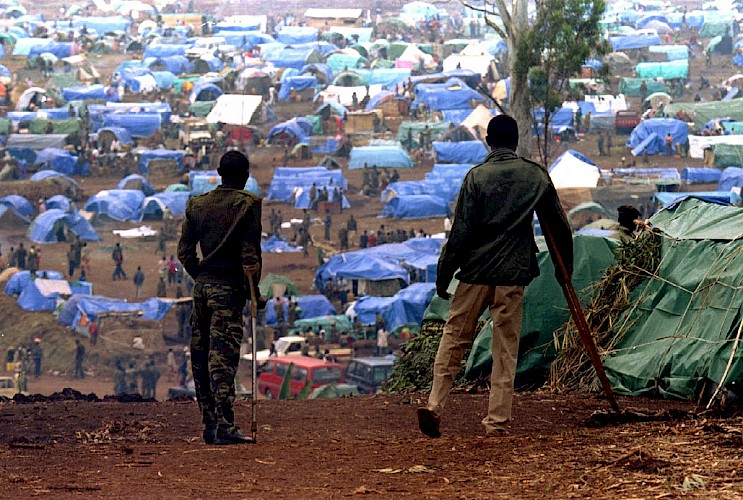
Two wounded Rwandan soldiers limp 23 August, 1994 as they approach the Panzi refugee camp which houses some 10,000 ex-Rwandan soldiers and their families. The residents of the camp complain of not receiving enough food and humanitarian assistance.
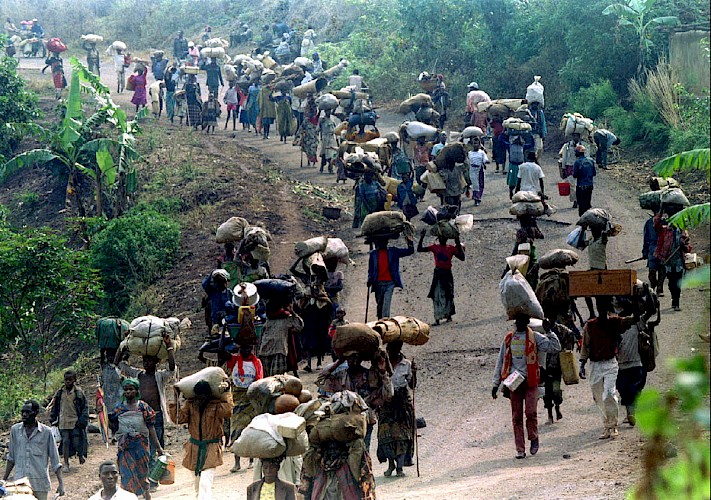
Thousands of Rwandan refugees walk to the Ruzizi-2 border post with the hope of entering Zaire August 22, 1994; :
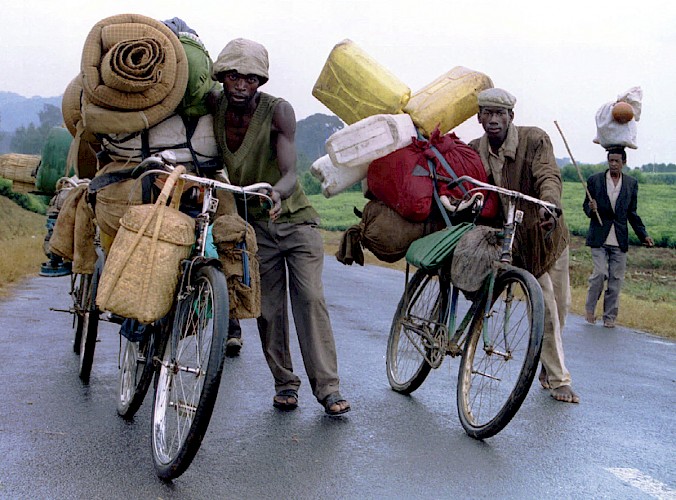
Hutu refugees push overloaded bicycles outside this village, 250 km southwest of Kigali, hours before Zairian authorities decided to close the border, August 20, 1994.
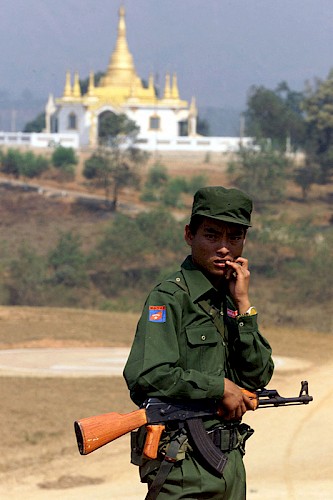
A soldier from former Shan rebel groups patrols in Moneyyaw, a Chinese village in the Shan state in northeastern Myanmar close to the border with China. Myanmar authorities took delegates of the 4th International Heroin Conference in one of the few opium growing areas which has escaped the government's anti-drug campaign. Myanmar, a major world producer of opium, predicted that stepped-up government suppression of poppy growing in remote areas would cut output of the drug sharply
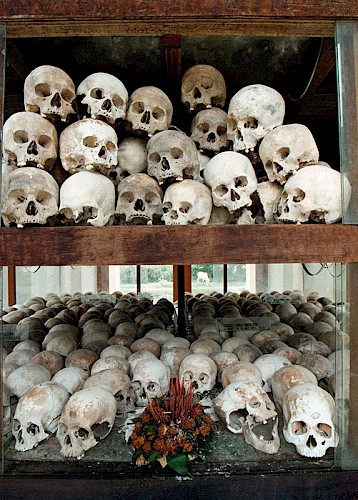
The victims of Khmer Rouge leader Pol Pot execution squads lie in a temple in Choeng Ek on the outskirts of Phnom Penh July 29, 1997. Enemies of Pol Pot's revolution were taken from a Phnom Penh interrogation center and put to death at Choeng Ek during Pol Pot's 1975-79 "killing fields" reign of terror. Pol Pot was found guilty of crimes against the people and the nation at a Khmer Rouge show trial in northern Cambodia July 25.
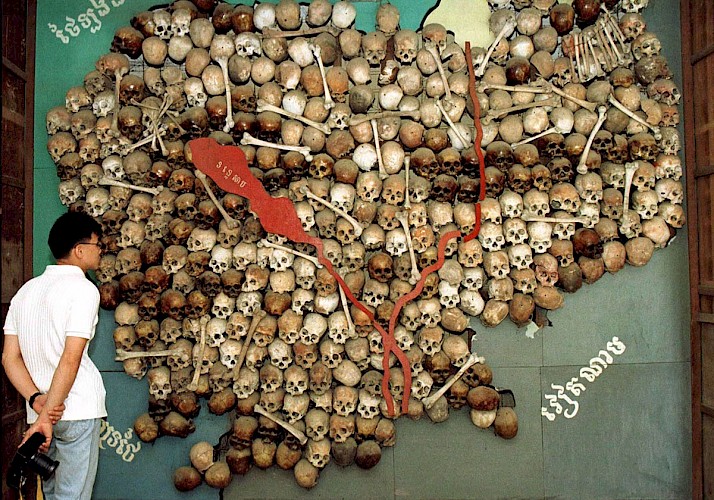
A visitor stands before a map of Cambodia made from the skulls and bones of victims of the Khmer Rouge's brutal 1975-79 "killing fields" regime June 23, 1997. The grisly map is displayed at Tuol Sleng in Phnom Penh, a former high school and torture centre during the Khmer Rouge reign of terror, when about 20,000 people died there. Cambodia's first prime minister said on Monday that despised guerrilla leader Pol Pot was alive and should be brought before an international tribunal, even if some people and countries were worried about what he might reveal in court.
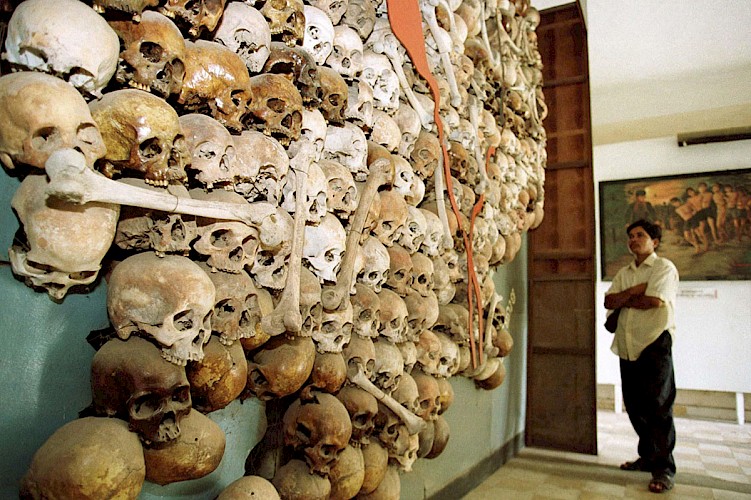
A visitor stands before a map of Cambodia made from the skulls and bones of victims of the Khmer Rouge's brutal 1975-79 "killing fields" regime June 23, 1997. The grisly map is displayed at Tuol Sleng in Phnom Penh, a former high school and torture centre during the Khmer Rouge reign of terror, when about 20,000 people died there. Cambodia's first prime minister said on Monday that despised guerrilla leader Pol Pot was alive and should be brought before an international tribunal, even if some people and countries were worried about what he might reveal in court.
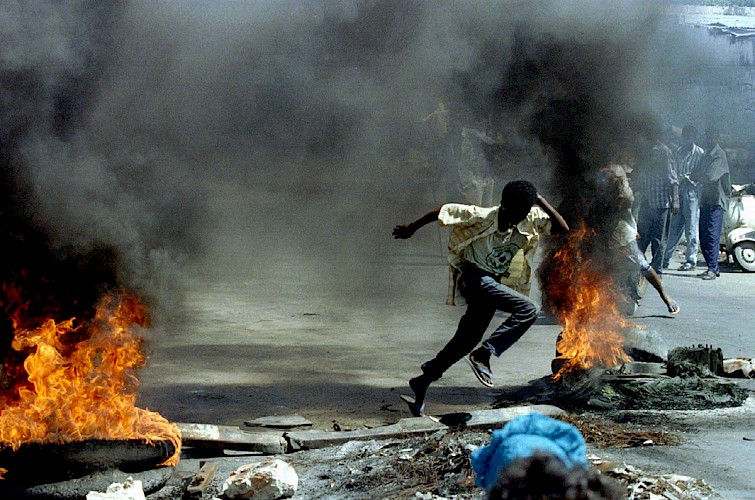
A Somali runs through the fire of burning roadblocks in the Somali capital October 22, 1993, to protest the UN Secretary General's one day-visit into the country.
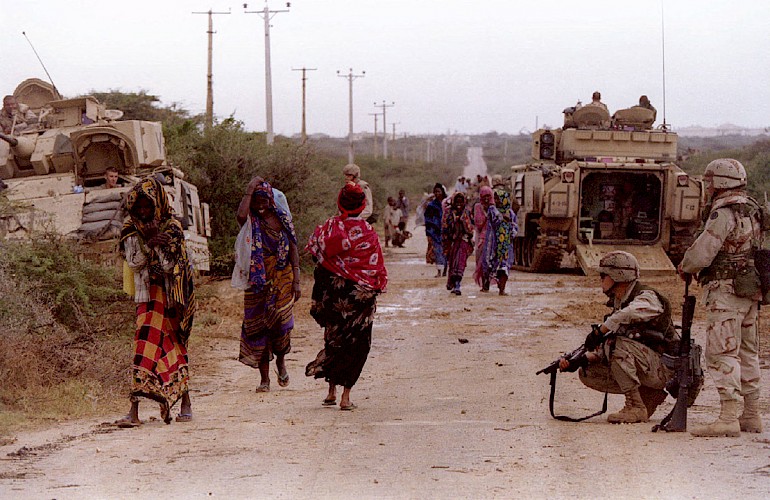
Somalis walk past US tanks and armoured vehicles from the 24th Infantry Division practicing south west of Mogadishu October 19, 1993.
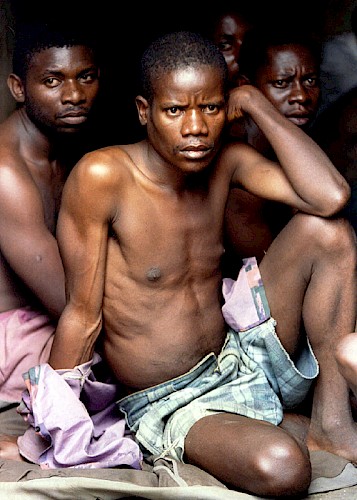
Prisoners, most of them Hutus, are packed in this hot, stinking communal cell at a prison in Kibungo, 120 km south east of Kigali August 12, 1994.
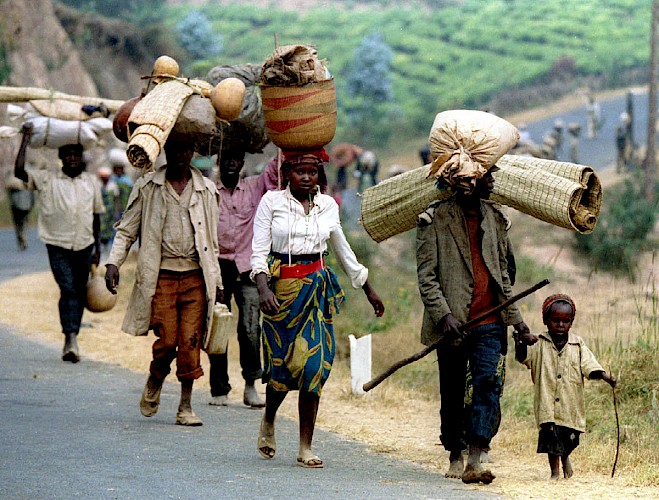
Hutus carrying their belongings flee this village on the edge of the French security zone in southwest Rwanda for the Zairean border August 16, 1994.
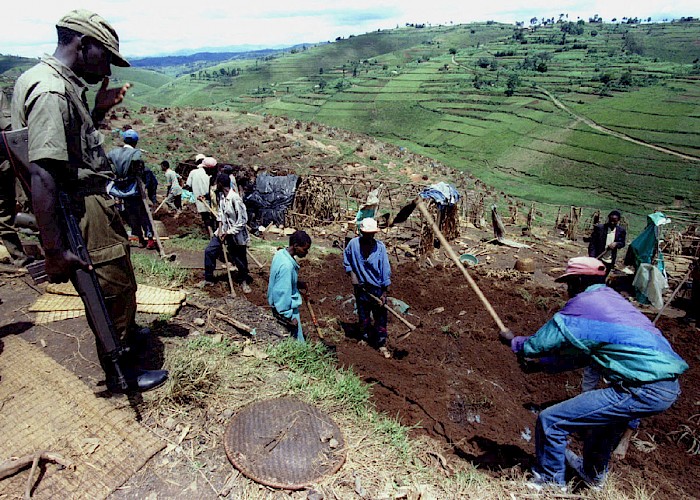
A government soldier watches members of the Rwanda Patriotic Army digging out bodies in this camp in southern Rwanda April 27, 1995. President Pasteur Bizimungu supervised the exhumation, not waiting for the independent commission of inquiry he has announced an hour earlier. The UN. now says 2,000 died in this camp last week.
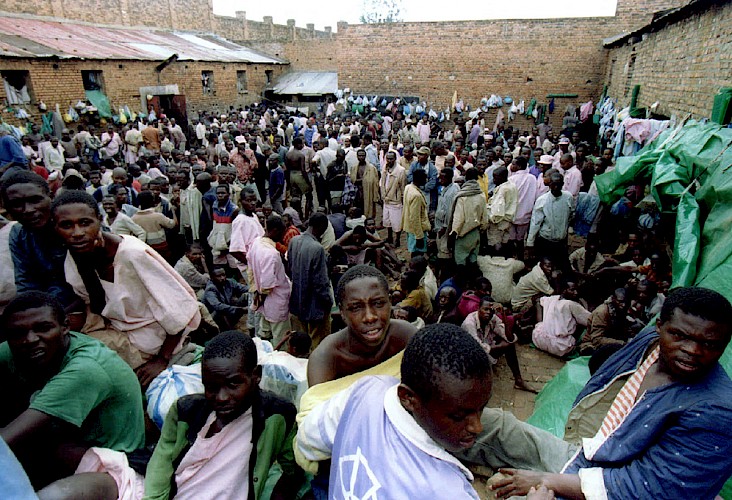
Dozens of prisoners, most of them Hutus, are packed in this prison in Kibungo, 120 km south east of Kigali August 12, 1994.
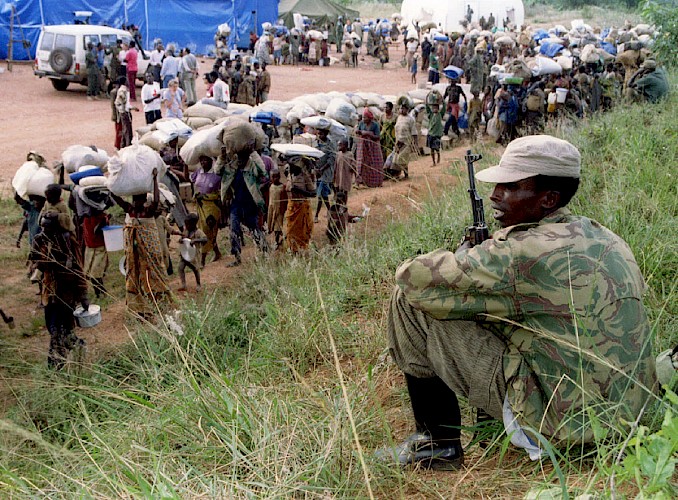
A government soldier guards a Hutu refugee camp in this village in southern Rwanda April 26, 1995. The refugees who were being transferred home from the former camps in the southwest of the country, fear for their lives as they are forced home after last year's genocide.
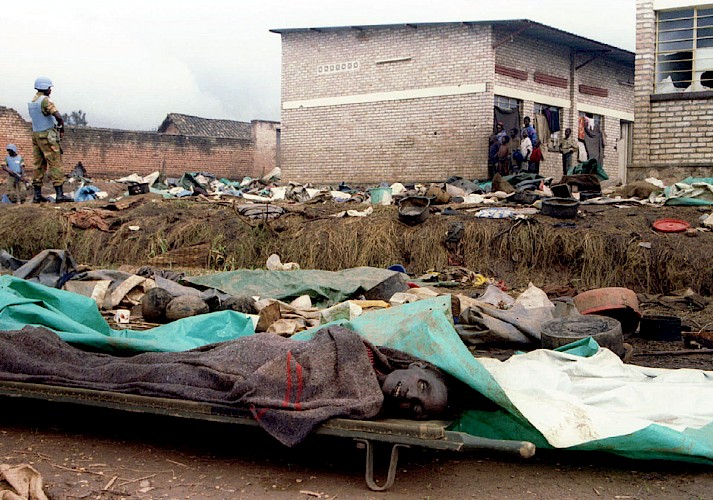
The body of a dead Hutu refugee lies on a stretcher at the entrance of Kibeho camp guarded by a UN peacekeeper (L) May 1, 1995. Food and water have been cut off for hundreds of remaining refugees. The Red Cross and other relief organisations are not allowed inside the compound.
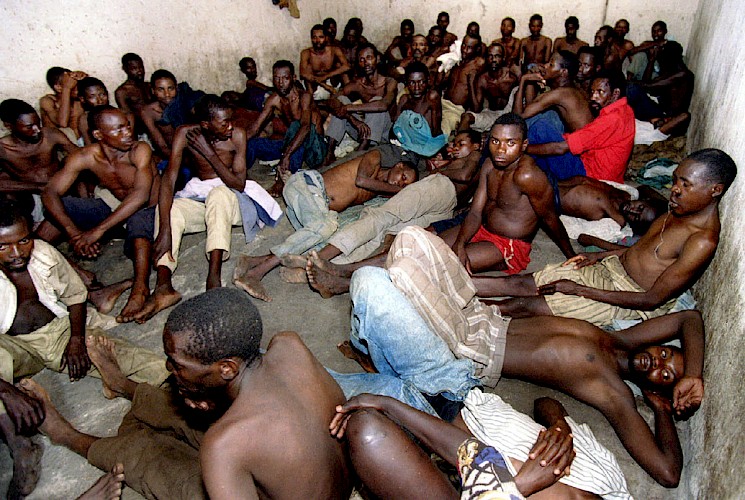
Dozens of prisoners, most of them Hutus, are packed in this hot, stinking communal cell at a prison in Kibungo, 120 km south east of Kigali August 12, 1994.
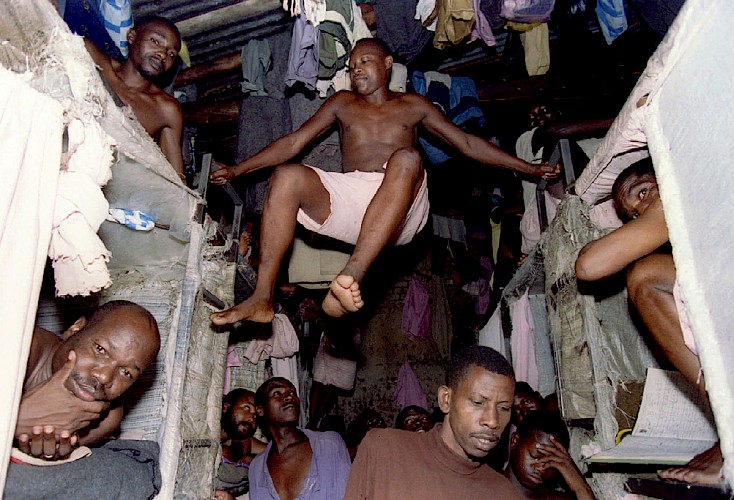
Inmates live in this overpacked cell in Kigali's central prison May 4, 1995. Nearly 9000 prisoners are crammmed in the prison built for 2,000. Over 30,000 prisoners are being held in filthy and diseased prisons since the new government took power ten months ago after war and genocidal killings.
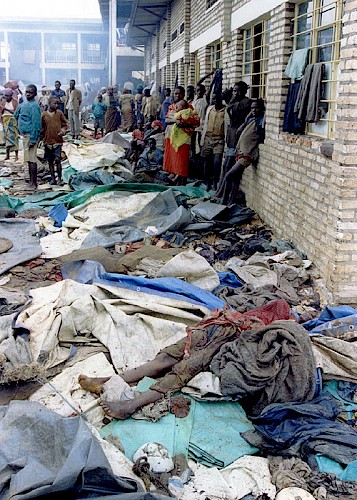
A dead body lies in a camp where some 500 Hutu refugees still live in a standoff with Rwanda Patriatic Army troops amongst mud and excreta April 27, 1995. Rwandan President Pasteur Bizimungu supervised the exhumation of 338 bodies which were dug out of some 30 graves and mass pits before Bizimungu presented the tally as the final death toll following the mass killing in the camp. The UN now says 2,000 died here last week.
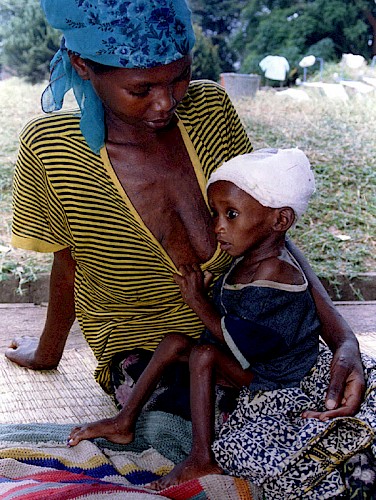
A Tutsi mother and her child wait to see doctors at the hospital of Butare, 100 km southwest from Kigali August 16, 1994. The child survived a head injury after being stoned during massacres in his village of Ngenda in central Rwanda where hundreds of Tutsis were killed by Hutus.
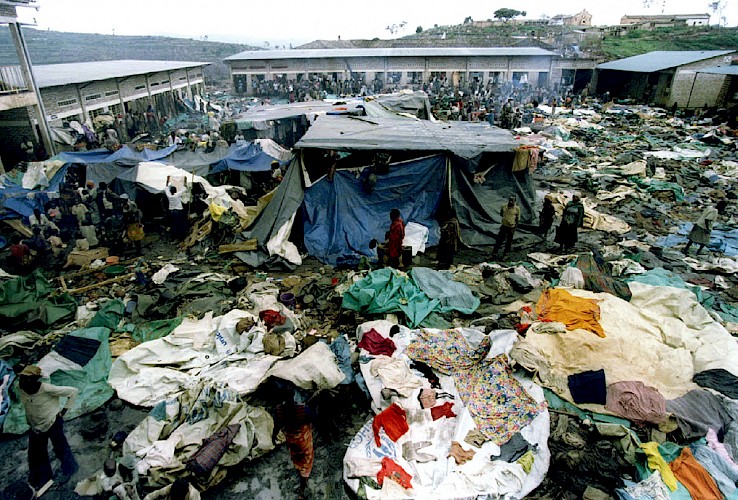
The U.N. Rwanda Emergency Office (UNREO) said May 2, 1995, it was standing by to evacuate some 10 casualties, possible victims of fighting, in this filthy diseased Kibeho camp in southern Rwanda where troops slaughtered thousands of Hutus last week. Nearly 1,000 Hutus, without water and food remain holed up in the compound incircled by government troops 10 days after they forcibly closed the camp. Picture taken May 1, 1995.




















